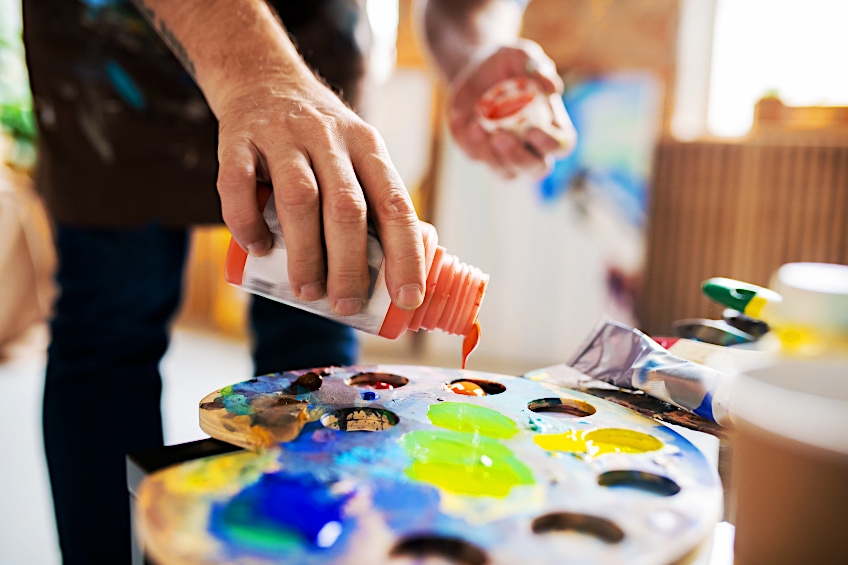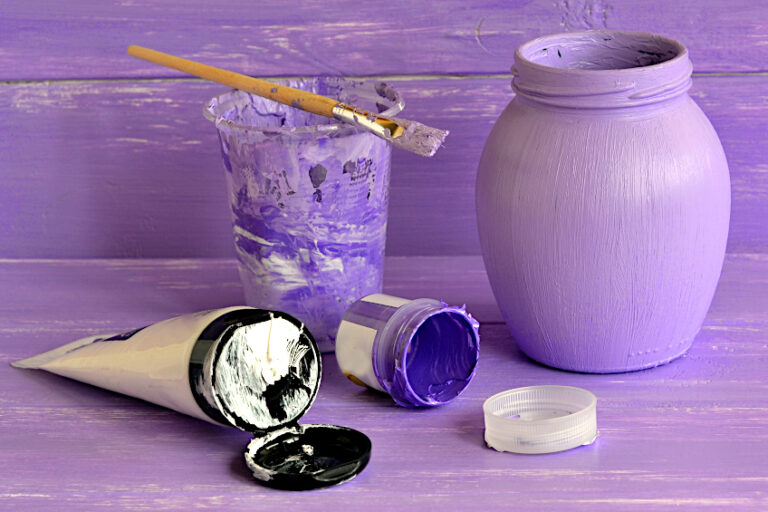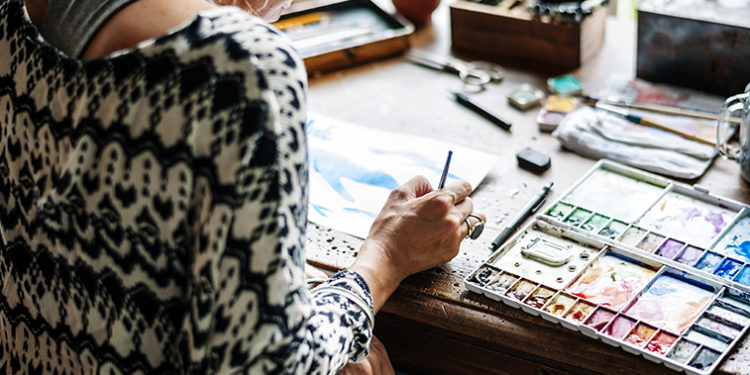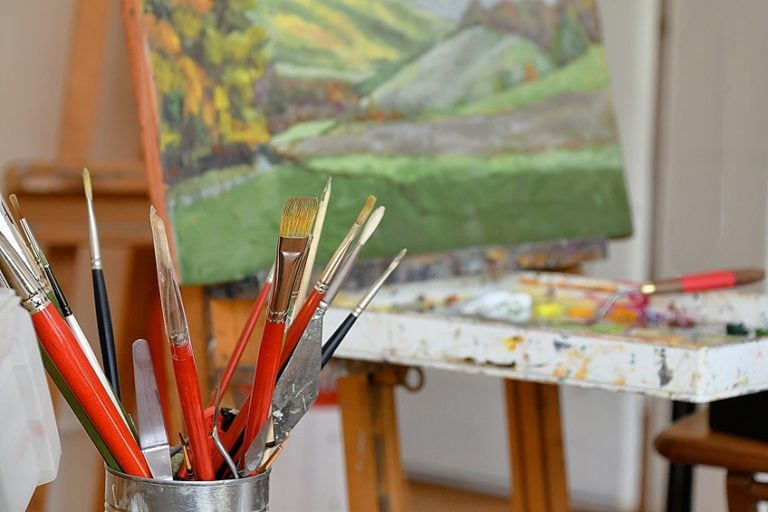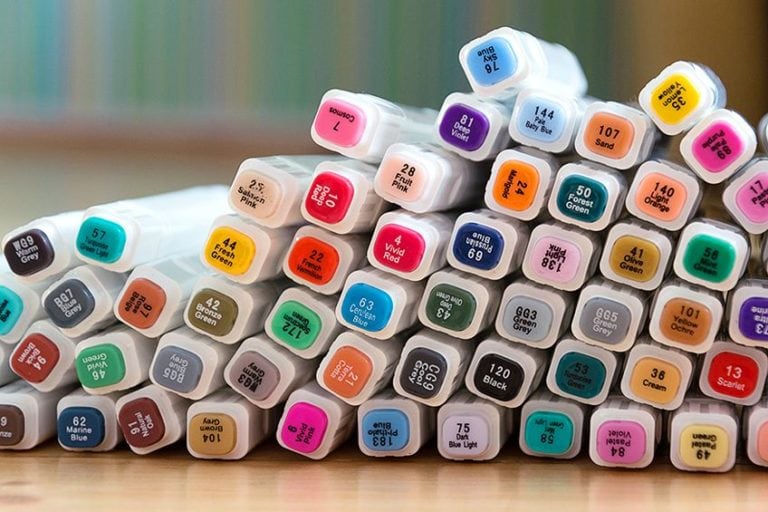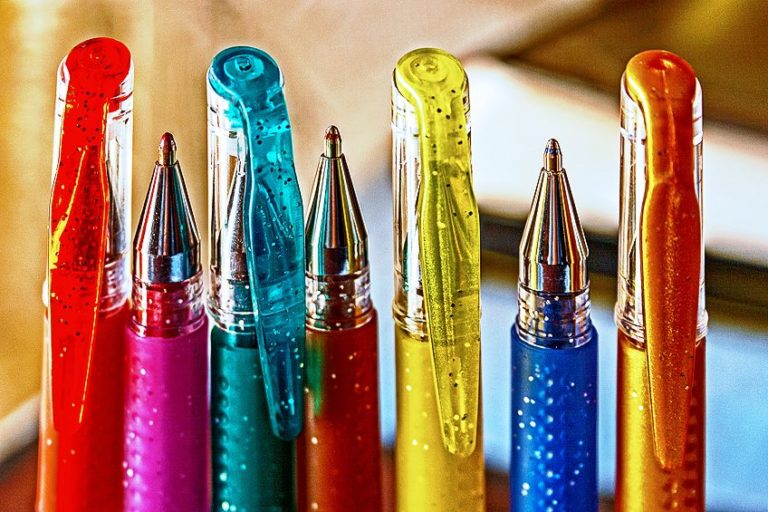How to Use Gouache Paint – Step-by-Step Guide to Painting with Gouache
This post may contain affiliate links. We may earn a small commission from purchases made through them, at no additional cost to you.
We have covered various other paint mediums and the techniques that come with them, but gouache painting is what we will be talking about today. What is gouache paint, you might ask? Well, in this gouache painting tutorial we will give a detailed description of how to use gouache paint, the various gouache painting ideas, and the gouache techniques that come with them. By the end of this, we will be painting with gouache before you know it! So, let us get into something comfy to wear, and dive into the wonderful world of gouache painting and gouache techniques.
Table of Contents
Gouache Paint Explained
What is gouache paint? Well, just like acrylic paint, gouache paint can either be pigmented with ingredients derived from nature or synthetically designed. The pigments are mixed with water and a binder, which is typically Arabic Gum. What makes gouache paint unique is the ratio of pigment to water, making the consistency fairly thick. This means that Gouache is similar to acrylic paint in application, but more comparable to the appearance of watercolors, except it is more vivid and not transparent.
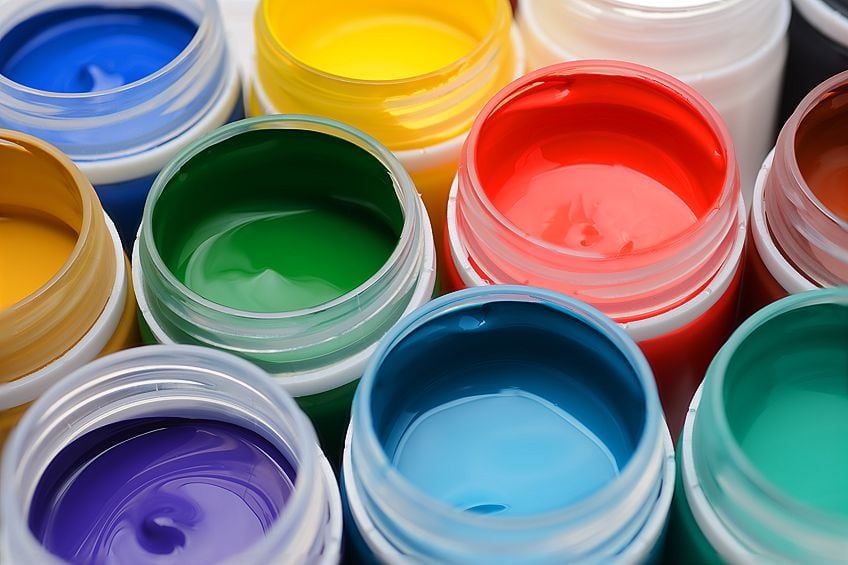
If you have been wondering how to use gouache paint, you can do so by using brushes that are suitable for watercolor paints. Watercolor Paper is also a good surface option, but you will not see the white paper through the paint because it is much thicker and more opaque than watercolor paint.
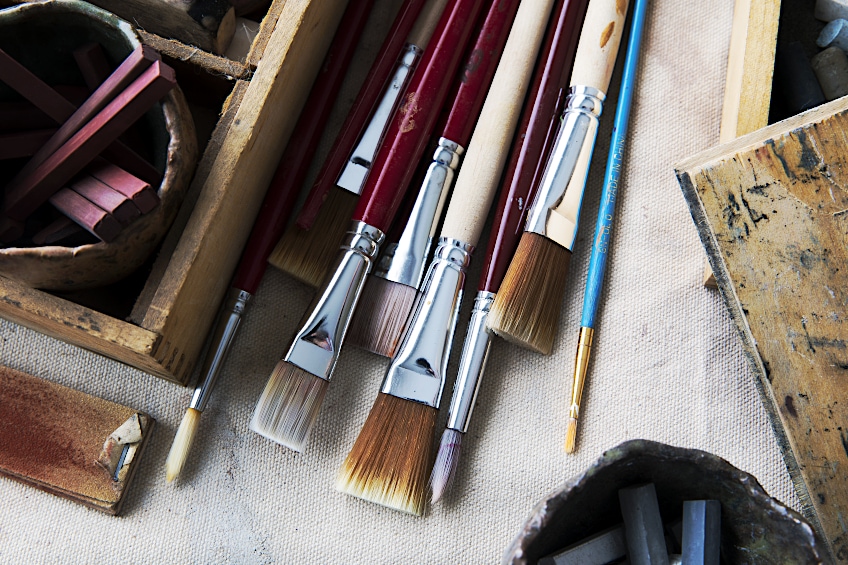
While you can use gouache paints as you would with acrylic paint, but acrylics differ in that they cannot be altered, you can redo the dry gouache paint, which is unlike acrylic paints that cannot be altered. This is possible by simply keeping a spray bottle nearby to spritz your dried painting to start fixing up what you would like changed.
Among the most common types of gouache paints are the artist or professional-level paints and the student-level paints. If you are new to gouache paints and looking for a great gouache paint set that still offers good quality at an affordable price, then the student-level product is a good choice for you. Otherwise, the professional-level gouache paints are more expensive, but their quality is amazing.
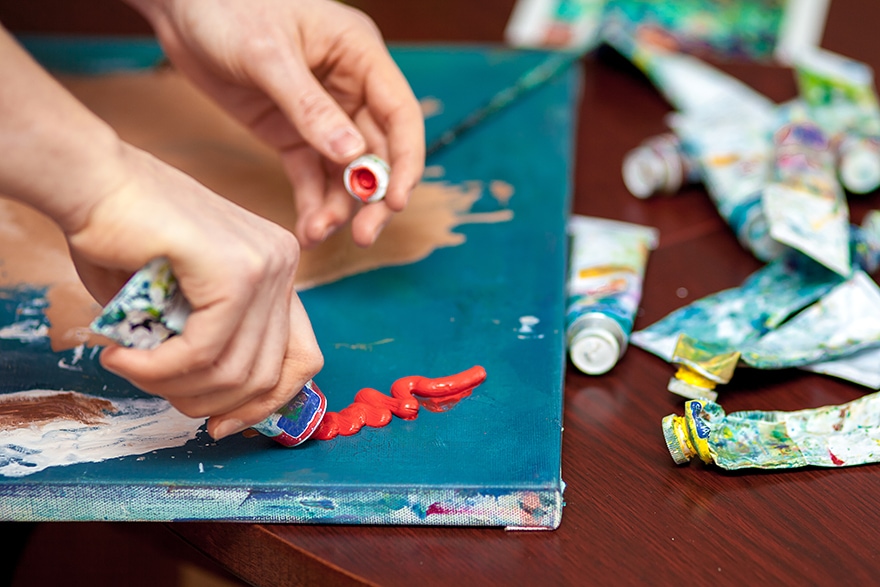
Comparing Gouache to Watercolor Paints
The ingredients that make up both watercolor paint and gouache paint are quite similar, but the amount of pigment in the gouache paint is much higher. Sometimes, manufacturers will add a little chalk into the mix to make the paint more opaque, but the amount of pigment makes the paint thicker than watercolors already.
You have the option to thin your gouache paint out by adding more water when you are painting, but the consistency is still thicker than watercolors, so if you are looking for that translucent appeal, watercolors are a better option.
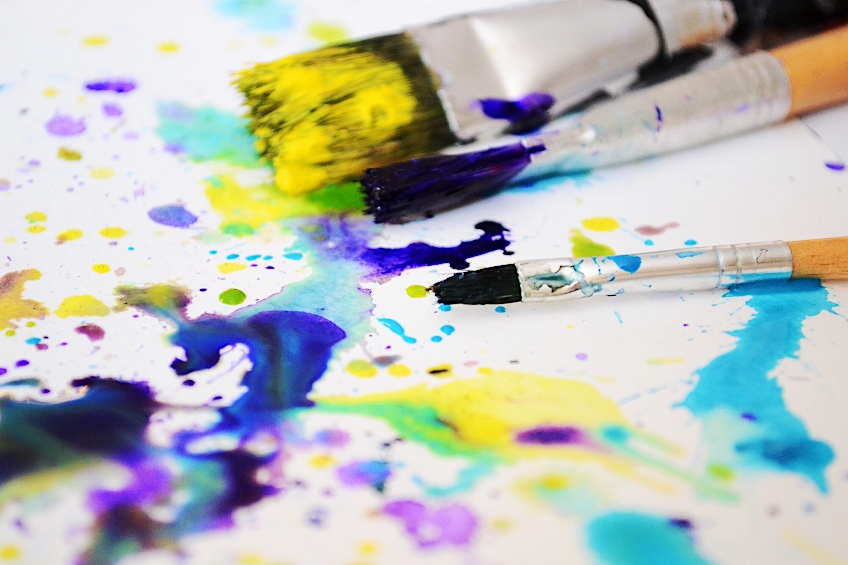
It is important to note that both types of paint require a slightly different technique when painting. This means that when you are painting with watercolors, you must go in descending order from lighter shades to darker shades, but when painting with gouache paints, you can paint from dark to light without an issue. You can just add in some white paint to lighten up the shade, and the opacity allows the light colors to be visible over the darker colors.
It is much easier to correct your mistakes with gouache than with watercolors, as it dries faster than watercolors. Water can be added to a gouache painting in order to reactivate it, so you can work on a specific area again if you were not originally satisfied with your efforts.
Comparing Gouache to Acrylics
If you have been wondering how to use gouache paints in comparison to using acrylic paint, you will find out the similarities and differences here. Acrylic paint is soluble in water, and so is gouache paint. The difference is that when acrylic paint is dry, it is resistant to water splashes, which means it can not be made wet again to correct mistakes and you will have to paint over to make those corrections. Gouache paint can easily be reactivated by spraying some water over the dried areas in order to work with that paint again to make corrections.
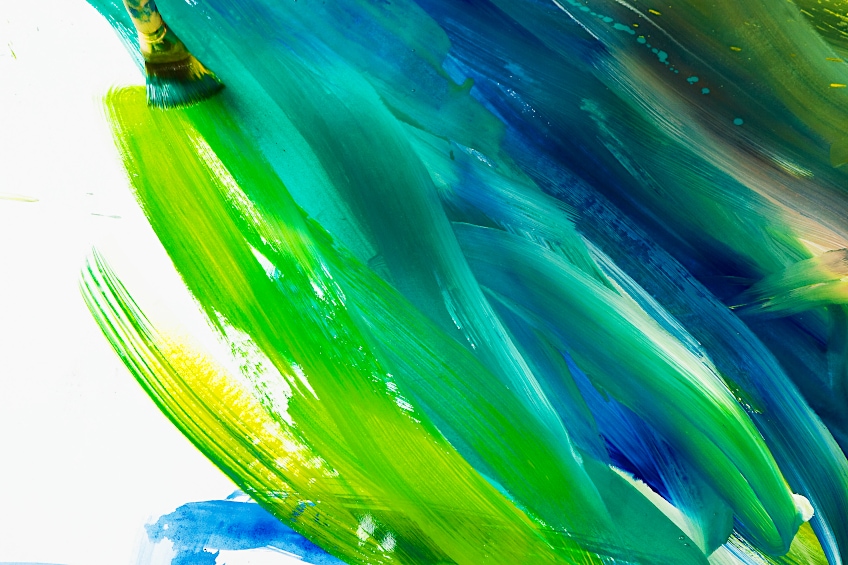
When gouache paint has dried, it can easily crack if the layer that was painted is too thick. This is because it does not dry very flexibly and will not bend with flexible surfaces, unlike acrylic paints, which are quite flexible when they dry. Both of these aspects call for your artwork to be stored carefully and in a safe place where it will not get damaged easily. The ideal storage is inside a glass frame where no liquid spills can threaten to wet the paint and smudge your artwork again.

Gouache Comparisons: A Summary
We have listed below a few comparisons between gouache, watercolor, and acrylic paint that you might find useful. If it is of interest to you, you can make mixed-media artwork by combining watercolors or acrylics with your gouache paint, which will help you achieve various textures.
| Gouache | Watercolors | Acrylics | |
| Amount of Pigment | A high amount of pigment | Low amount of pigment | Varies between the brands |
| Viscosity | Thicker | Quite liquid | Gouache is not as thick |
| Binding agent | Gum Arabic | Gum Arabic | Acrylic polymer emulsion |
| Aesthetic | Opaque – Matte | Transparent | Matte, glossy, or satin finish |
| Suitable Surface Material | Various sorts of paper are suitable | Only watercolor paper is suitable | Versatile to use on many different surface materials |
| Time to dry | Dries quickly | Will dry slower because there is more water | Quicker drying time to gouache paint |
| Use | Shade order does not matter | Limited to painting from light to dark | Varies according to what you want from your artwork |
| Corrections | You can easily correct mistakes by spritzing water over the mistake | Corrections are hard to do | Possible when wet, but not when the paint has dried. |
| Blending | Blends averagely | Blending is an ease | Hard |
| Color when dry | Colors change when dry, some appear lighter and some appear darker. | The color will appear lighter when dry | The color will appear darker when dry |
Purchasing Gouache Paint
Just like with all paint mediums, gouache paint is available in many brands at various prices. Some products are better suited than others. To make choosing the right one easier for you, we have our favorite product listed below, along with pros and cons:
Top Recommended Gouache Painting Set: ARTEZA Paint Set
If you are looking for a gouache paint product that is easy on your budget, then ARTEZA’s gouache paint set is the right one for you. It is great for those who are just starting out, as well as the professional artist looking to stock up on supplies. This product we are speaking of is equipped with sixty vibrant colors, but there are smaller ones available.
Because the paint formula is chemical-free, it is safe for use by anyone, even children. If you use these richly pigmented paints that have good coverage, you can achieve finishes in either matte or opaque. A little covers quite a large area, so not too much is needed and they will get you through a fair amount of artwork before you need to replenish your stocks. This is a fast-drying paint, but you can always spritz it with a bit of water to reactivate it.
- Paints are richly pigmented, with a dense, opaque, and matte finish
- The thick nature of these paints allows for maximum coverage
- The paints are quick-drying but can be reactivated with water
- Spreads easily
- Inexpensive
- Coverage is good
- Broad color variety
- Bright and vivid colors
- Dries too fast for some
- Difficult to blend
- Visible streaks can form from thick paint
How Safe is Gouache Paint?
The question on every parents’ mind is most likely something along the lines of, how safe is gouache paints? Or, are gouache paints toxic? Well, the good news is that they are usually made with a combination of naturally derived ingredients from the pigments, to the binding agent. There are a few brands out there who like to put in those nasty chemicals, but for the most part, gouache paints are not toxic. Keep your eye out for benzene or formaldehyde on the label of the paint in question if you are concerned about toxins, then avoid those brands.
There are many natural pigments that can be used safely, but there are also some pigments that you should be wary of. You should steer clear of any paints that have lead-based products or cadmium, as those can be harmful to your health. The safe use of gouache products should not be a problem, but as always, it is essential that you read the label carefully. Ultimately, there is no question that gouache is a safer option when compared to oil paints or acrylic paints.

We do not advise using any paint that is not specifically designed for your skin as body paint. This does not mean that it will hurt you if you spill some accidentally, but it does mean that those who are looking for paint that is suitable as body paint then must look elsewhere. It is easily washable, and it needs a little soapy water with a cloth or a sponge to clean from fabrics.
Techniques for Gouache Painting
There are several techniques and styles of painting with gouache paints that will expand your painting skills and personal painting style immensely. But, what is gouache paint used for? Illustrators use gouache paints for the depictions of books, and graphic designers use gouache paints for the various designs, they all make use of a selection of techniques. We are going to discuss a few of those techniques in this next section.
Fixing or Changing Dried Areas
Gouache paints do dry fast, but they can be brought back by rehydrating the paint with some water. You can either paint over the dried paint with a wet brush, or you can spritz the paint with a bottle of water with a spray nozzle. If you use this effect, you are able to achieve a softening of edges and make corrections. You can do this by wetting a paintbrush and brushing it over two different colors of dry paint to blend them together.

Using a Dry Brush for Effect
This technique calls for a paintbrush where most of the paint has been wiped off the bristles. Dip it into the paint, and use a tissue to wipe away the majority of the paint. The idea is the scratch on the leftover paint on the paintbrush. You will end up with a textured effect with visible brush strokes. The method allows one to create a tonal effect by having areas of color that are solid, and other areas that have less color, in which the paper underneath shows through. The texture it provides is versatile, and it is very useful when highlighting something or adding to your background.
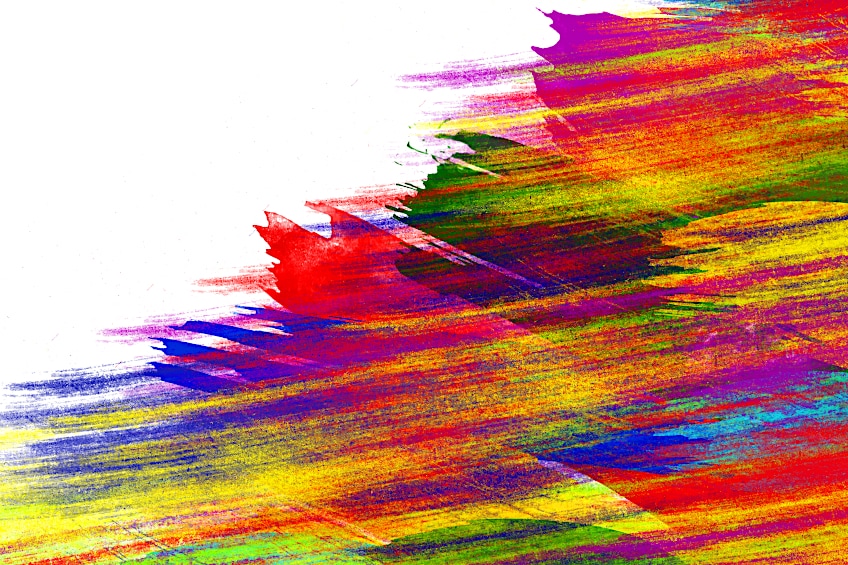
Achieving a Glazed Effect
We have spoken about how fast this paint can dry, but if you add some more water to the mix it will have a clearer aesthetic, similar to watercolor, but still opaque. The glazing effect is done by adding layers of paint mixed with water over already dried areas. A translucent layer can be applied over the dry paint to enhance the color and bring out the richness of the hue. Additionally, by changing up how much you dilute the paint, you are also able to create deep shadows by using this technique.
Mixed Media With Gouache
You could combine gouache with other types of art media like acrylic or watercolor paints. Just play around with the paints until you find your favorite combination of paints. There is no right or wrong way to paint, there’s just our personal artistic style and freedom to explore that, so have fun!

Wet-Dry Techniques
Because the consistency of gouache paint is smooth and thick, it can be applied to dry paper very easily. When the paint has dried, you can rehydrate it with a spritz of water, or paint over the dry area with a wet paintbrush.
Wet-on-Wet Techniques
This technique is about painting on paper that has been made wet. The paper need only be damp, so it does not have to be dunked in water. This helps the paint spread much easier and creates a more watercolor-like effect.
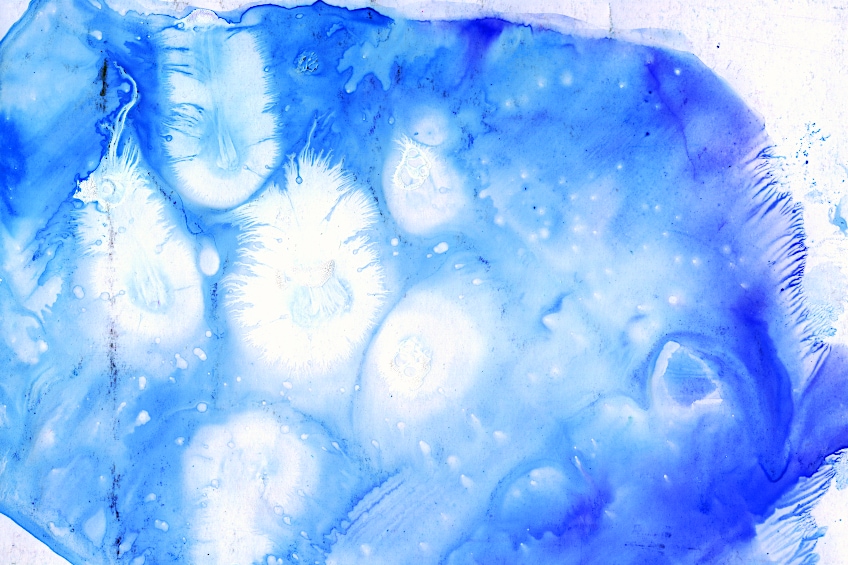
Painting in Layers
The application of opaque layers will cover the paint beneath it, just as acrylic paints provide this same result. This will allow you to use less water when painting with gouache. After you have painted your first layer of gouache, wait for it to dry before applying a second. Gouache paint is soluble in water, and can easily be made wet again. Before you paint the next one, the previous layer must be dried properly.

Playing Around With Gouache
What is gouache paint used for? This question can be answered in many ways, due to the fact that you can experiment with many different ways to work with the gouache paint, trying to create various looks and styles. Rather than using a paintbrush to apply paint to the wall, how about applying paint to the wall by using cotton wool, a toothpick, paper, or anything else. There are endless possibilities with gouache paint, just practice some creative freedom.
Splashes of Color
Gouache is used like watercolors, by wetting the brush, then dipping it into the paint. This method is done by splashing some water over a certain area of the painting, and then dipping your brush into some more paint, and holding the brush over the wet area. The paint then leaks from the brush, making beautiful color splashes.
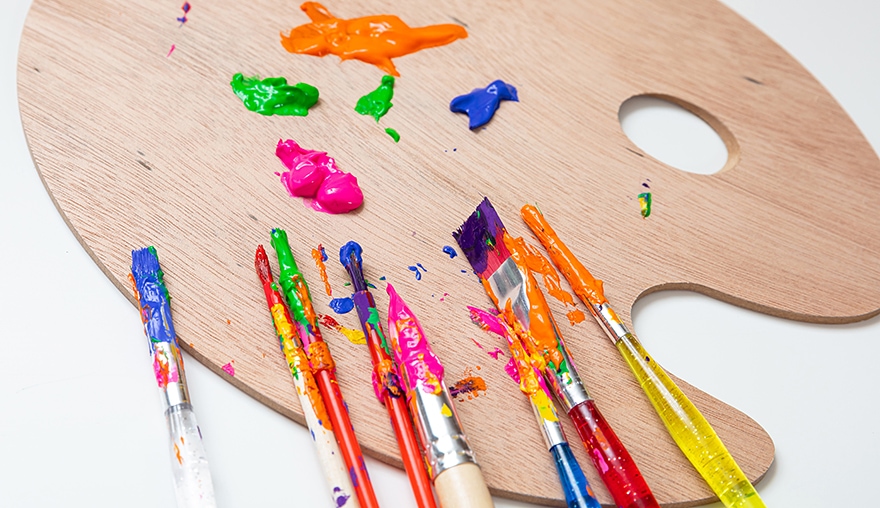
Shadows and Highlights
Essentially, you want to apply different color values to different areas of the picture so that you can separate the areas in the light from the parts in the shadows. You can make a mid-tone by combining two shades of one color and white paint. You must simply decide on one color and paint it with some white to create highlights. As you continue to work your way into shadow areas of your artwork, you will keep adding more of your decided color until you reach the darkest shade.
A Step-by-Step Gouache Painting Tutorial
It is essential that you gather all of the tools and materials required in advance if you have been wondering how to use gouache paint. There are two forms of gouache paint that you can purchase: tubes or trays. As a beginner, it is advisable to get a few primary colors, white, and a few black paints to create a variety of shades. The good news is that there are some very good and affordable gouache sets available that will suit your taste and budget.
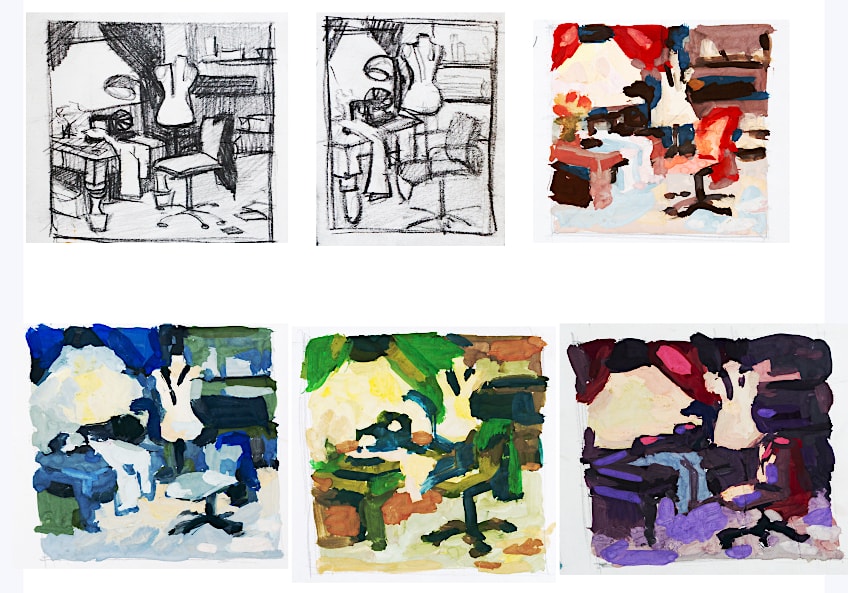
Set up Your Working Area
A work area should always be free from distractions and disturbances so you can focus on your work uninterrupted. The major benefit of using gouache is that, since it is water-based paint, ventilation is not as detrimental as painting with oil paints. Gouache is also very easily cleaned up, so if you spill a bit, you should have no problem cleaning it up. Nevertheless, you may want to lay some newspaper or a protective covering over your work surface before you begin.
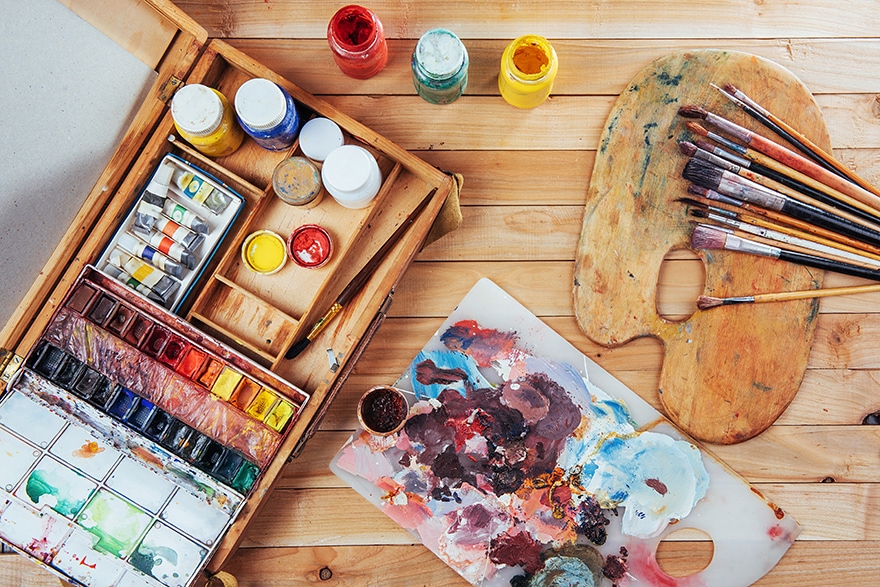
Experiment First
You can avoid making any painting mistakes by planning and laying out the whole painting project in advance. If you are new to painting with gouache, you would be wise to play around with the medium and learn how to use gouache paint before attempting a specific art piece.
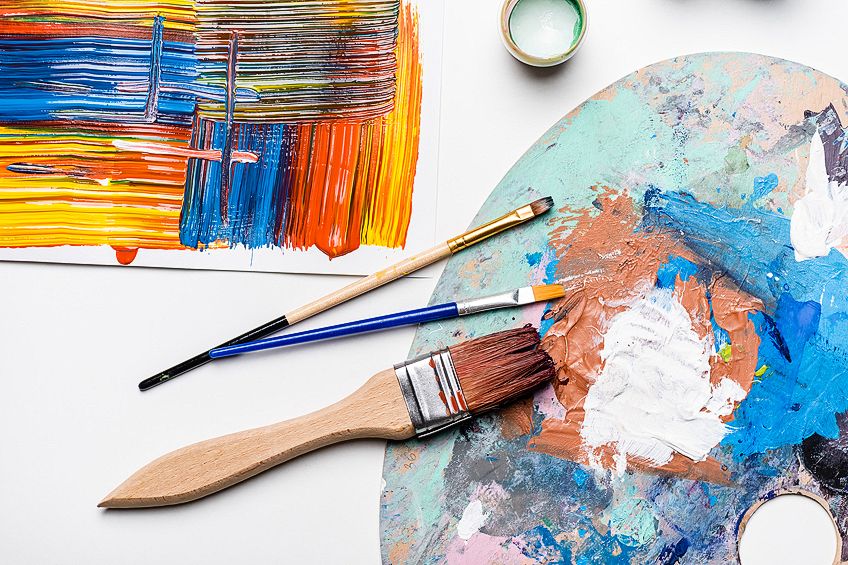
Take notice of the reaction of the paint when water is added and when it is used without water. You will see an increase in transparency, similar to what you would expect to see with watercolors when diluting gouache paint.
Plan Out Your Painting
As mentioned, planning is important to prevent making mistakes. A good way to simplify this process is to draw a draft of your design first. Before painting the surface, you will need to draw your design on the surface with a graphite pencil. By doing this, you will be able to get a better idea of what type of design you are painting. As soon as you have completed this process, you will be able to paint in the areas that require white paint. Gouache paint is repelled by oil paint, so you can paint oil paints in certain areas you wish to remain white.
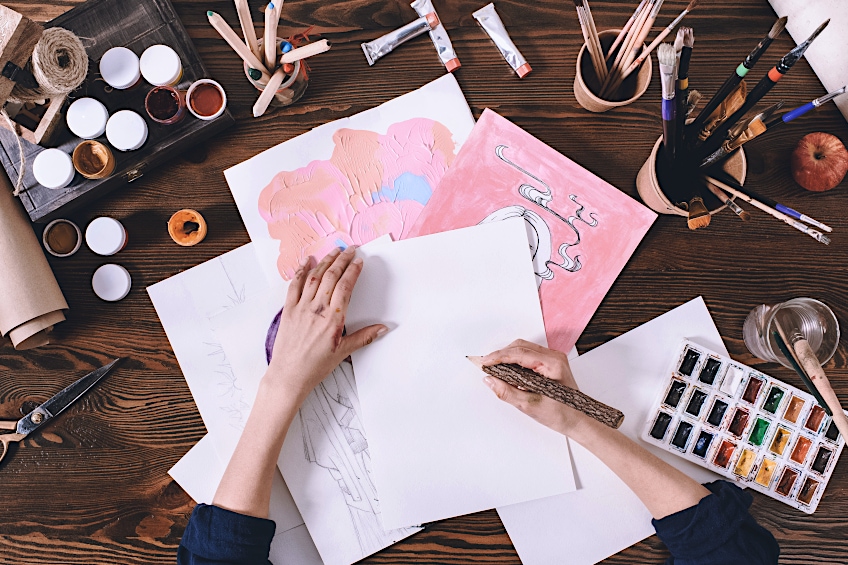
If there is no white in your painting, a base coat is a good place to start. Paint a single color coat as the first layer to your background, and then work your way from there, adding the next colors for your design or illustration. If you want, you can make the paint more smooth by adding water to the mixture.
A watercolor effect can be achieved by applying just one or two layers of diluted gouache, but you do not have to add more layers to achieve the desired effect. Unless you apply the gouache very thinly, it will crack because gouache paint is not suited to thick applications.
Color Combinations
The first thing you need to know about combining colors is that you should either use a separate brush to distribute each color or to make sure that you clean the brush each time you switch to a new color. if you dip a paintbrush that is filled with blue paint into red paint, the red will lose its vibrancy and become a more purple color.
It is possible to blend colors directly on paper or canvas with gouache paint since it is quite thick. If you are trying to paint realistically, then you can perform slight color changes by mixing certain colors together to get the most accurate color for our subject matter. With only your primary colors and some white paint, you can create a variety of colors and shades.
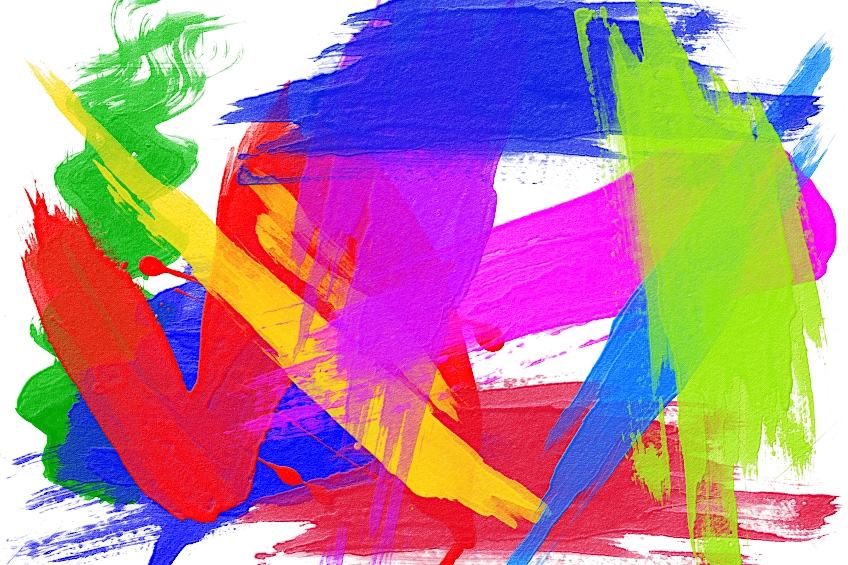
If you have thinned out your paint too much, you can add a tiny bit of Gum Arabic when you are mixing colors, which acts as a binder. Using this method will allow the color to adhere to the paper surface and at the same time, it will produce other effects, such as enhancing the gloss of the paint once it is dry, or creating a more vivid color once it has dried.
Creating Depth
Adding depth to your painting is done by painting a series of layers. Each layer will descend from light shades to darker ones. The most important thing about depth created with your gouache painting is that each layer must dry properly before the next one is added. Gouache paints have a tendency to bleed into the layer beneath, which results in the color turning a muddy mix.
To create depth in your background, you can use certain shades in the areas that need them, or if the area is in shadow, you can use the respective darker shade, and the areas that are highlighted can be painted with the respective lighter shade, this is similar to color blocking. Once that layer has dried, you can add in the next layers, and move on to adding depth into the details of your painting.
Detailing
For the detailing of your artwork, we suggest using a small brush. This is usually when you are painting small things like the leaves on a tree, or the feathers on a bird. Some artists like to add an outline before they paint the details to help guide their brush. Some people like to use the same brush, but otters prefer to add the outline with a marker pen, a pencil, or a chalk pencil.
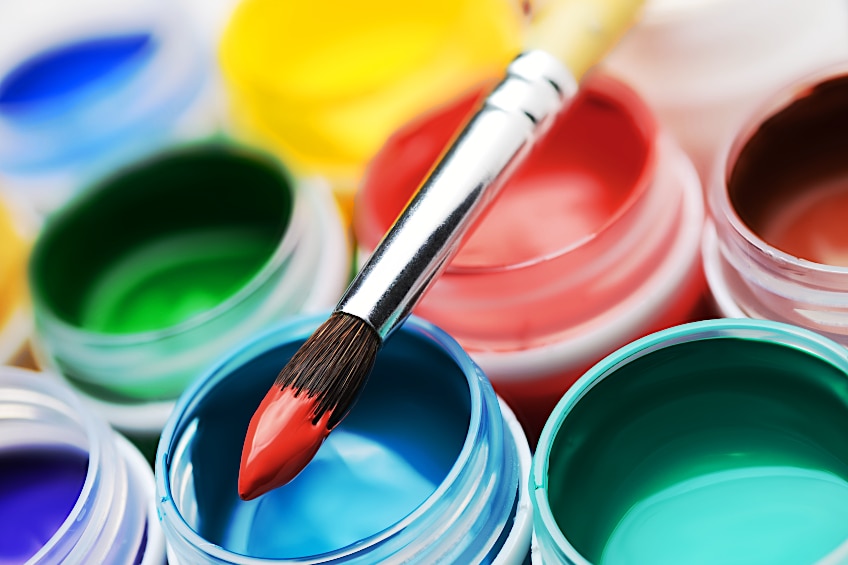
Suggestions for Painting With Gouache
This gouache painting tutorial will be incomplete without our summarized suggestions on how to use gouache paints and the various techniques to use for the different styles. These suggestions are based on the learnings of artists who have practiced working with gouache paints for a long while.
- The ideal consistency for gouache paint is a smooth and creamy one
- Just like with watercolor paints, it is best to paint from light to dark colors o that the light colors are visible
- Keep a spritzing bottle filled with water nearby so that you can spray your artwork to wet the paint again
- After painting the base coat, make sure it has dried properly before you paint on the next layer to prevent it from bleeding through. This should only take several minutes
- Rinse your bush of the paint thoroughly before you change to another color to avoid contaminating the color vibrancy
- As a beginner, it is suggested to purchase a paint set with a limited color variety. That way you can get used to mixing colors and how that works without it getting too complicated with the vast color variety sets
- Make sure that your paint is painted in a thin layer because gouache has a tendency to crack when applied too thick
- We advise using a brush with synthetic bristles because it does not hold onto as much water as the natural bristles do
- You can create several colors from icing the primary colors, and white and black paint
- Experiment with the various brands out there, you will know which one you prefer
- Student-level gouache paints might have fillers in their mixture, for a higher quality paint we suggest using artist-level gouache pains
So, ultimately, what is Gouache paint? In a nutshell, gouache paint is similar to watercolor paint and acrylic paint, made with a natural pigment, water, and a binder. What is Gouache paint used for? Well, to conclude this gouache painting tutorial, gouache paint is used primarily for designs and illustrations by designers and, of course, illustrators. Nevertheless, gouache paint is used for a variety of creative artwork, no matter the industry you are in, there is a world of gouache painting ideas waiting for you.
Frequently Asked Questions
How is Gouache Paint Made?
Gouache paint is similar to acrylic paint and watercolor paint in that it is naturally made with pigments derived from nature, some water, and of course, a binder.
What is Gouache Paint Used for?
Painting with gouache is usually done by artists of commercial standards like graphic designers, or illustrators for books. These paints are versatile in nature, being similar to both acrylic paint and watercolor paint. This also makes their use suitable for a vast amount of artwork.
Is Gouache Compatible with Acrylics?
Your Gouache painting ideas will change up as you progress in skill with this paint, which means you might start to explore using other paints with gouache paint to add more texture to your artwork. Gouache can be used along with acrylic paint, and it is the most common choice of mixed media gouache techniques.
What Kind of Paper Works with Gouache?
Most artists would recommend using paper that is specially made to work with watercolor paint because some of the techniques require splashing the surface you are painting with water so the paper will need to be somewhat sturdy. However, gouache paint is versatile, so it is able to be painted on NY kind of paper as well as canvases.
How do I Choose the Right Brush for Gouache?
Most artists who are skilled with gouache paint will suggest that a synthetic brush is your best bet when painting with gouache paint because it will not hold onto as much water as a natural-bristle brush.
Larissa Meyer is a 32-year-old mother from Michigan and creative spirit since childhood. Her passion for painting and drawing has led her to an education as an illustrator and a career as a freelance graphic designer. She has a Bachelor of Fine Arts in Illustration and a degree in Graphic Design. Larissa is a talented artist who is able to master a wide range of styles and techniques to bring her artistic vision to life. Her greatest passion is currently fluid painting and epoxy resin art. Larissa’s love for art and her knowledge and experience in illustration make her the perfect Creative Director for our fluid-painting.com team. She is the creative head of our team and shares her passion and knowledge with our community through articles and tutorials.
As a mother of a 2-year-old daughter, Larissa also understands the importance of fostering creativity in early childhood. She uses her experience and knowledge to help other parents inspire their children and develop their artistic skills as well.
Learn more about Larissa Meyer and about us.

